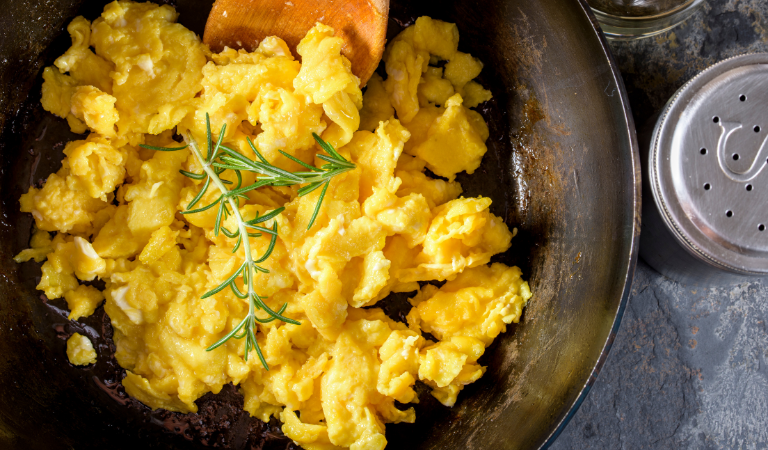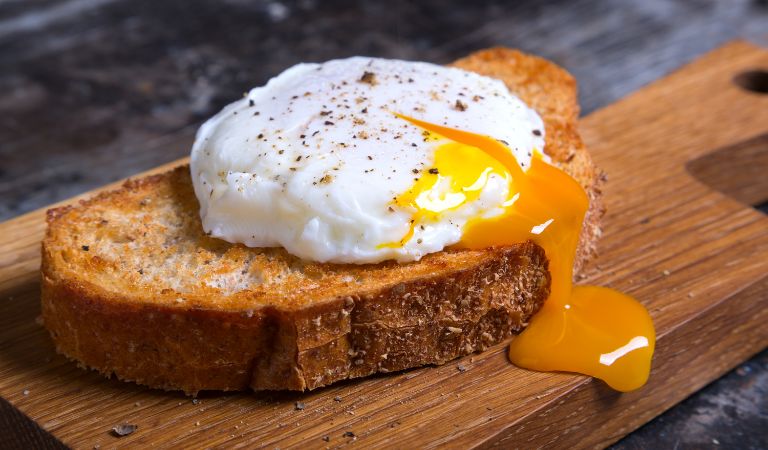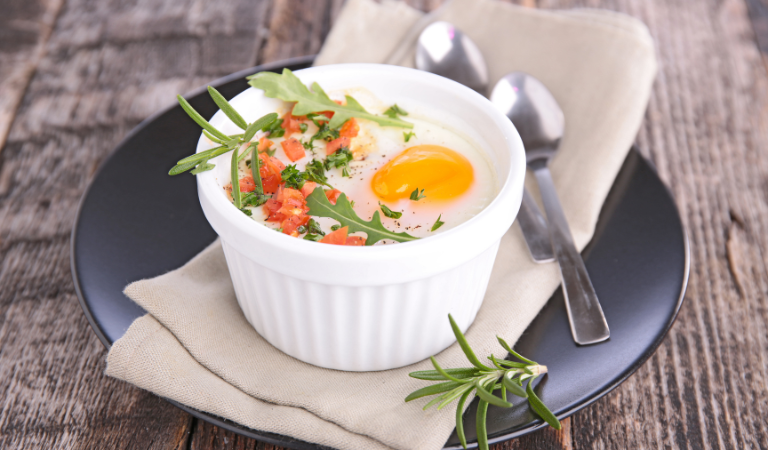There are a variety of ways to cook eggs, and each method results in a different texture and flavor. The option to cook eggs one way over the other can depend on the materials you have available, the dish you’re serving, or purely on preference. In this informative guide, we discuss the different methods of cooking eggs.
Scrambled Eggs
This method is one of the most common ways to cook and serve eggs. Scrambled eggs are made by whisking the eggs in a separate mixing bowl until they are light and fluffy, then cooking them over low heat until they are set. The key to perfect scrambled eggs is not overcooking them – they should be creamy and soft, not dry or rubbery.
Some people prefer their scrambled eggs slightly drier and firmer (hard-scrambled eggs), while others may opt for a more watery or runny consistency (a soft scramble). The method for cooking both is essentially the same; the difference lies in how long they are cooked. 
Omelet
Omelets can be seen as a derivative of scrambled eggs since their preparation process is the same. An omelet is made by whisking eggs in a separate bowl and then cooking them in a hot fry pan until they are set around the edges but still slightly runny in the center. Once the eggs are cooked, fillings such as cheese, ham, and vegetables are added. The omelet is then rolled up or flipped in half and served.
Hard Boiled Eggs
Hard-boiled eggs are unique because they are cooked inside their shell; it is one of the few methods in which the egg is not cracked into a pan or pot. They are referred to as “hard” because both the egg white and the yolk have a firm or hard consistency. Hard-boiled eggs are cooked by bringing a pot of water to a boil and then carefully dropping the eggs in. They cook for about 10 to 12 minutes. They can then be peeled and eaten as is or used in recipes such as egg salad.
Tip: To peel the shell off easier, you can place the hard-boiled eggs into an ice water bath immediately after removing them from the water. The cold water softens the shell and allows it to come off without as much resistance.
Soft-Boiled Eggs
Soft-boiled eggs are cooked with the same process as hard-boiled eggs, with just a portion of the time. This method results in a fully cooked and hardened egg white, with a soft and runny egg yolk. To make a soft-boiled egg, bring a pot of water to a boil, then carefully drop in your egg. The egg should only cook for six minutes before being removed from the pot. Similar to hard-boiled eggs, they can then be peeled and enjoyed. These eggs can be enjoyed by serving them in an egg cup, in ramen, or on top of toast.
Poached Eggs
A poached egg is similar to a boiled egg, except that it is cooked without the shell. The egg white is cooked, with the yolk remaining runny. To poach an egg, fill a saucepan with a few inches of water and bring it to a gentle simmer. Crack the egg into a small bowl or cup and then quickly but gently lower it into the water. Cook the egg for two to four minutes, or until the whites are set, but the yolk is still runny. Use a slotted spoon to remove the egg from the water and then serve on top of toast or a salad. 
Fried Eggs
Sunny Side Up
Sunny side up eggs get their name from how they look: the yolk of these eggs look like a sun. To make a sunny side up egg, crack an egg directly into a greased or buttered pan over medium heat. Let the egg cook for around two to four minutes, until the edges begin to brown. This method only cooks one side of the egg, while the other side is gently cooked through the heat below. The yolks are left liquid and completely runny while the egg white is cooked until it is solid. These eggs are often enjoyed alongside a piece of toast to dip the toast inside the yolk.
Over Easy
Sunny side up eggs and over easy eggs are often used interchangeably or get confused for one another. While the beginning of their cooking process is identical, there is a distinct difference between the two: sunny side up eggs are only cooked on one side while over easy eggs are cooked on both sides. To make an over easy egg, crack an egg directly into a greased or buttered pan over medium heat. Once the white of the egg is cooked (around two to three minutes), carefully flip it over to cook the other side. After it’s been flipped, the egg should only be cooked for another 10 to 30 seconds. By the end of the cooking process, there is a film on top of the yolk, but the egg should still be liquid. Over easy eggs are great served on top of avocado toast.
Over Medium
Over medium eggs have the exact same cooking process as over easy eggs. The difference between the two is that over medium eggs are cooked for a bit longer after they’ve been flipped. When cooking the second side of an over medium egg, it should be left on the heat for about 30 seconds to one minute. There will still be a film over the yolk of the egg, but it will be slightly thicker than the film on an over easy egg. Additionally, the egg yolk itself will not be as runny, and it will be slightly jammy. Over medium eggs are great alongside toast or a bagel.
Over Hard
As the name suggests, the consistency of an over-hard egg is the hardest or firmest of all the other types of fried eggs. Over hard eggs — sometimes referred to as over well — are cooked all the way through on both sides until the yolk is fully solid. Similar to over easy and over medium eggs, one side of the egg is cooked and then the egg is flipped over to cook the other side. But, with an over hard egg, you’ll usually want to break the egg yolk with a spatula or fork after you first crack the egg onto the pan. To achieve an over well egg, cook it for an additional minute or two after it has been flipped over. This method is perfect for adding a fried egg to a breakfast sandwich without a messy or runny yolk.
Baked Eggs
Baked eggs are an easy way to cook eggs. Rather than making eggs on a stovetop, this method bakes them in the oven. To bake eggs, simply crack them into a small, oven-safe baking dish and then place them in an oven preheated to 375°F. When they’re done, the whites are set and the yolks are cooked to your liking. Baked eggs can be flavored with a variety of seasonings, such as salt, pepper, and herbs. They can also be topped with cheese, meat, or vegetables. Baked eggs make a great breakfast, brunch, or snack. 
Cooking Egg White-Only Eggs
Some people may prefer to just enjoy egg whites rather than the whole egg. Egg whites are high in protein which can help in building strong muscles. You can cook an egg white omelet or scrambled egg whites. To do so, you’ll first need an egg separator to remove the egg whites from the yolks; the rest of the cooking processes remain the same.
Let’s Get Cracking
There are endless possibilities when it comes to cooking eggs. Knowing the difference between each method and understanding how to cook them can allow you to expand your skills. Eggs are a great source of protein that can be incorporated into a variety of dishes such as ramen, avocado toast, or just alongside a classic breakfast. Experiment with different methods and fillings to find your perfect breakfast, brunch, or snack!






